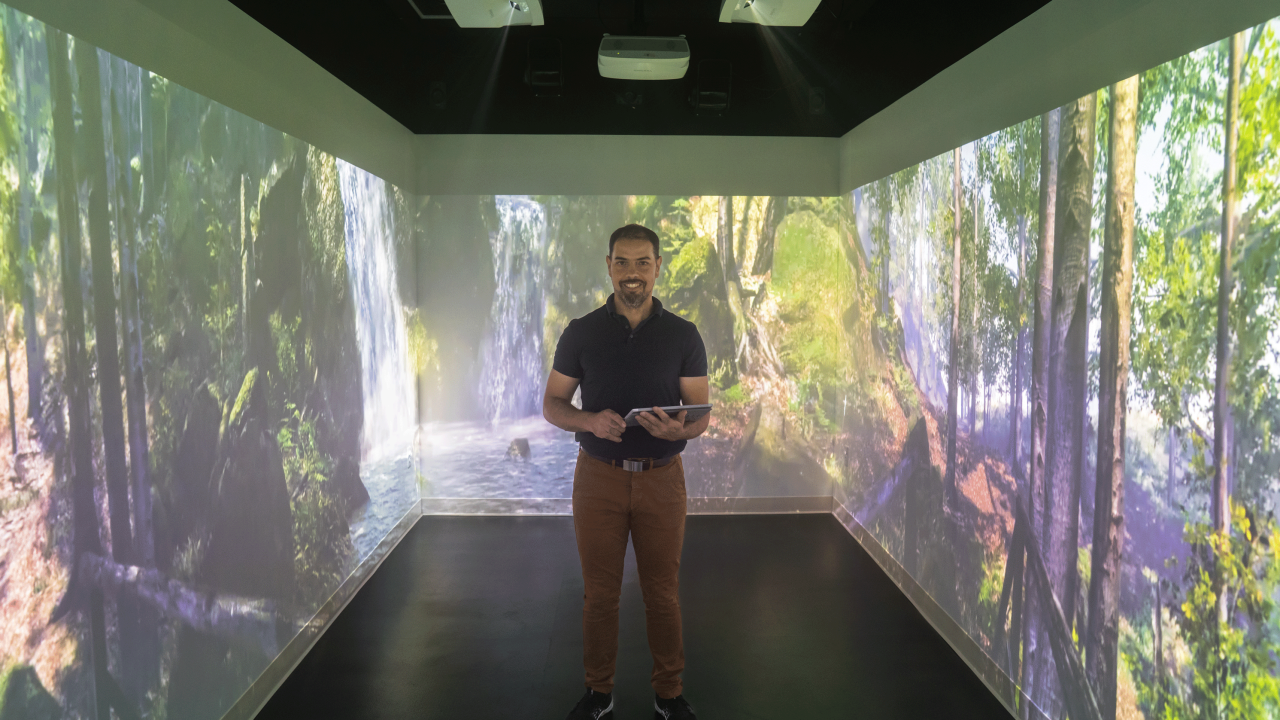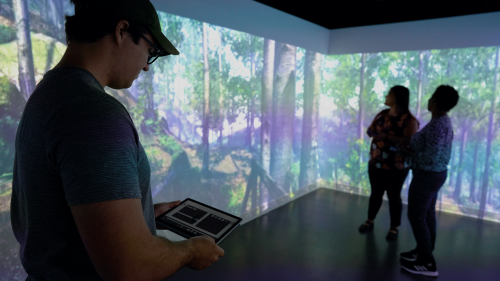
Space features 360-degree video experience with variable sounds, smells and air conditions
What makes a cup of coffee or an energy bar enjoyable is usually more than just the taste. The surrounding environment may also influence the experience.
With that in mind, the Department of Food Science and Technology at University of California, Davis has constructed a new multi-sensory immersive room that can be used for product development, innovation and research.
Julien Delarue, associate professor in sensory and consumer science, emphasizes that testing food products in a realistic environment can help collect more authentic consumer opinions. Delarue’s research focuses on methods to measure sensory perception and preferences, as well as the effective use of that feedback in food design.
“For some types of sensory sessions that relate to behavior or preferences, I would strongly advise to try to be as close as possible to real life,” Delarue said. “It’s important to connect to real life; it’s crucial for the food industry.”
Switch scenes with a tap of a button
Delarue led the effort to redesign an already existing sensory lab equipped with standard sensory booths at the Robert Mondavi Institute Sensory building to give participants an immersive, real-life experience. The room is equipped with six video projectors that are synchronized to display high-definition videos onto the four walls of the room that show a 360-degree view of various environments, such as a restaurant, a hiking trail or a beach.
“The context is all around and you’re part of it,” Delarue said. “The idea is to immerse participants in different environments.”
Delarue can make changes to the simulated scenery with a touch of a button. Using an electronic tablet, he can control heating lamps, misters and fans to adjust the temperature in the room, as well as air conditions. There are also mounted speakers to provide spatialized audio, such as ambient natural sounds, and a mechanism that releases scents.

Making sensory testing more authentic
Rather than using a lab setting, Delarue plans to conduct first experiments in the new sensory immersion room to collect data regarding energy bars. He hopes that measuring consumer preferences or behavior when individuals can experience a product in a real-life setting will be more accurate.
“In a lab, people may not behave normally and could possibly be biased,” he explained. “If I give you a sample in a lab, you’ll taste a spoon of it or have a sip and give an answer; it’s like a test. If I immerse you, you will spend more time and enjoy the experience more and give a better account of your experience.”
The immersive room may also be used to test non-food products, including cosmetics, skincare items or textile creations.
“It’s important for any industry and for research in general because you want to catch the real behavior,” Delarue said.
Media Resources
- Julien Delarue, Department of Food Science and Technology, jdelarue@ucdavis.edu
- Tiffany Dobbyn, College of Agricultural and Environmental Sciences, tadobbyn@ucadavis.edu
